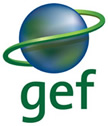Climate change vulnerability assessments
The boundaries and names shown, and the designations used on this
map do not imply official endorsement or acceptance by the United
Nations or IUCN
Name
Gueumbeul
WDPA ID
68154
Country
SEN
IUCN category
Not Applicable
Species vulnerable to climate change
According to Traits-based Vulnerability Assessments (TVAs)
| Vulnerable Species | Total Species | ||
|---|---|---|---|
| Amphibian |
1
|
7
|
|
| Bird |
41
|
315
|
|
| Mammal |
6
|
48
|
|
| Total | 48 |
370 |
12 % of bird, amphibian, and mammal species assessed are considered vulnerable to climate change
Expected species turnover
According to Species Distribution Models (SDMs)
Percentage of species turnover: Median (95% Confidence Interval)
| by 2010-2039 | by 2040-2069 | ||
|---|---|---|---|
| Bird |
|
|
|
| Mammal |
|
|
|
| Amphibian |
|
|
Vulnerable species
| Name | Order | Exposure by 2010-2039 by 2040-2069 |
IUCN Red List category | Sensitivity to climate change |
Adaptability to climate change |
|---|---|---|---|---|---|
| Caprimulgus europaeus | Caprimulgiformes |
|
LC |
|
|
| Falco peregrinus | Falconiformes |
|
LC |
|
|
| Himantopus himantopus | Charadriiformes |
|
LC |
|
|
| Lybius vieilloti | Piciformes |
|
LC |
|
|
| Pelecanus onocrotalus | Pelecaniformes |
|
LC |
|
|
| Tringa totanus | Charadriiformes |
|
LC |
|
|
| Ciconia nigra | Ciconiiformes |
|
LC |
|
|
| Numenius arquata | Charadriiformes |
|
NT |
|
|
| Rhinopomastus aterrimus | Coraciiformes |
|
LC |
|
|
| Torgos tracheliotos | Falconiformes |
|
VU |
|
|
| Apus apus | Apodiformes |
|
LC |
|
|
| Circus macrourus | Falconiformes |
|
NT |
|
|
| Falco subbuteo | Falconiformes |
|
LC |
|
|
| Ortyxelos meiffrenii | Gruiformes |
|
LC |
|
|
| Anas acuta | Anseriformes |
|
LC |
|
|
| Apus pallidus | Apodiformes |
|
LC |
|
|
| Bucorvus abyssinicus | Coraciiformes |
|
LC |
|
|
| Circus pygargus | Falconiformes |
|
LC |
|
|
| Hieraaetus pennatus | Falconiformes |
|
LC |
|
|
| Lymnocryptes minimus | Charadriiformes |
|
LC |
|
|
| Tringa erythropus | Charadriiformes |
|
LC |
|
|
| Circaetus gallicus | Falconiformes |
|
LC |
|
|
| Upupa epops | Coraciiformes |
|
LC |
|
|
| Circaetus beaudouini | Falconiformes |
|
VU |
|
|
| Aythya nyroca | Anseriformes |
|
NT |
|
|
| Streptopelia turtur | Columbiformes |
|
LC |
|
|
| Struthio camelus | Struthioniformes |
|
LC |
|
|
| Recurvirostra avosetta | Charadriiformes |
|
LC |
|
|
| Ardeotis arabs | Gruiformes |
|
NT |
|
|
| Streptopelia roseogrisea | Columbiformes |
|
LC |
|
|
| Gyps fulvus | Falconiformes |
|
LC |
|
|
| Pernis apivorus | Falconiformes |
|
LC |
|
|
| Buteo buteo | Falconiformes |
|
LC |
|
|
| Haematopus ostralegus | Charadriiformes |
|
LC |
|
|
| Larus ridibundus | Charadriiformes |
|
LC |
|
|
| Marmaronetta angustirostris | Anseriformes |
|
VU |
|
|
| Calidris alpina | Charadriiformes |
|
LC |
|
|
| Passer domesticus | Passeriformes |
|
LC |
|
|
| Cursorius cursor | Charadriiformes |
|
LC |
|
|
| Turdoides fulva | Passeriformes |
|
LC |
|
|
| Fulica atra | Gruiformes |
|
LC |
|
|
The full description of the methodology used for this assessment can be downloaded here: Traits-based Vulnerability Assessments
Expected changes in climate suitability
| Name | By 2010-2039 | By 2040-2069 |
|---|
The full description of the methodology used for this assessment can be downloaded here: Species Distribution Model










